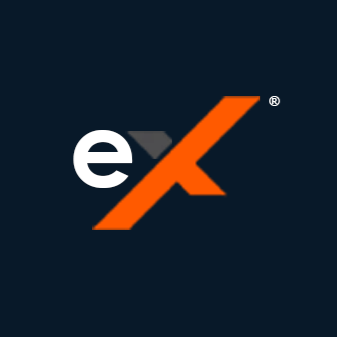LEARNING OUTCOME 4
Computer Software
Computer software is a set of instructions, data, or programs used to operate computers and execute specific tasks. It is the intangible part of a computer system, as opposed to the physical hardware. Software is broadly divided into two main categories:
- System Software: Manages computer hardware and provides a platform for application software to run.
- Application Software: Designed to perform specific tasks for the end-user, such as creating documents, browsing the web, or managing finances.
System Software
System software is essential for the basic functioning of a computer. It acts as the intermediary between the hardware and the user or application programs. Key types of system software include:
- Operating System (OS): The core software that manages all hardware resources (CPU, memory, storage) and provides services for other software. Examples include Windows, macOS, Linux, Android, and iOS.
- Device Drivers: Specialized programs that allow the OS to communicate with and control specific hardware devices like printers, graphics cards, and keyboards.
- Utility Software: Programs that perform maintenance and optimization tasks, such as antivirus software, backup utilities, and disk cleanup tools.
- Firmware: Low-level software embedded in hardware devices (e.g., BIOS on a motherboard) that provides initial instructions for the hardware to operate.
Operating System (OS) Functions
The OS is the most crucial piece of system software, performing several critical functions:
- Resource Management: Allocates and manages hardware resources like CPU time, memory, and storage space among various applications.
- Process Management: Manages the execution of programs (processes), ensuring they run smoothly without interfering with one another.
- File Management: Organizes and keeps track of files and directories on storage devices, allowing users to create, delete, and access them.
- Security: Provides security features such as user authentication (passwords) and access control to protect the system and data from unauthorized access.
- User Interface (UI): Provides a way for users to interact with the computer, either through a Graphical User Interface (GUI) with icons and windows, or a Command-Line Interface (CLI).
Types of Operating Systems
Operating systems are designed for different environments and purposes:
- Multitasking/Time-Sharing OS: Allows multiple programs to run concurrently by sharing CPU time. This is standard for modern desktop OS like Windows and macOS.
- Distributed OS: Manages a group of independent computers and makes them appear to be a single computer, enabling distributed computing.
- Network OS (NOS): Provides features to manage network resources, such as file sharing, printers, and user access on a network. Examples include Windows Server and Linux server distributions.
- Real-Time OS (RTOS): Designed for systems that require a very fast and predictable response to events, such as in industrial control systems or medical devices.
- Mobile OS: Optimized for mobile devices like smartphones and tablets, focusing on touch interfaces and battery efficiency. Examples are Android and iOS.
Application Software Categories
Application software enables users to accomplish specific tasks. Common categories include:
- Word Processing: For creating and editing text documents (e.g., Microsoft Word, Google Docs).
- Spreadsheets: For organizing, analyzing, and visualizing data in tabular form (e.g., Microsoft Excel, Google Sheets).
- Databases: For storing, managing, and retrieving structured information (e.g., Microsoft Access, MySQL).
- Presentation: For creating visual presentations with slides (e.g., Microsoft PowerPoint, Google Slides).
- Graphics and Design: For creating and editing images, illustrations, and layouts (e.g., Adobe Photoshop, Canva).
- Web Browsers: For accessing and viewing websites on the internet (e.g., Google Chrome, Mozilla Firefox).
Deploying Software According to Requirements
Software deployment is the process of making a software system available for use. A successful deployment follows a structured process:
- Preparation: This phase involves analyzing requirements, setting up the target environment (servers, databases), creating a backup plan, and communicating the deployment schedule to all stakeholders.
- Testing: Before going live, the software must be rigorously tested in an environment that mimics the production setting. This includes unit testing (individual components), integration testing (components working together), and User Acceptance Testing (UAT), where end-users validate that the software meets their needs.
- Deployment: This is the act of installing the software into the production environment. Strategies like a full deployment (all at once), rolling deployment (in stages), or blue/green deployment (switching between two identical environments) can be used to manage risk.
Relevant Business Concepts
The use and development of software are closely tied to business operations, particularly in areas like management, human resources, and accounting.
Management and Human Resources
- Managerial Roles: Managers are responsible for planning, organizing, leading, and controlling resources to achieve organizational goals. Software tools are heavily used in all these functions.
- Recruitment: This is the process of attracting, screening, and selecting qualified people for jobs. HR software (HRIS) automates much of this process.
- Payroll: The process of managing employee salaries, wages, bonuses, and deductions. Payroll software ensures accuracy and compliance with regulations.
Accounting Concepts
Accounting is the process of recording and reporting a company's financial transactions. Computerized accounting software has made this process more efficient and accurate.
- The Accounting Cycle: An 8-step process from recording transactions in journals and ledgers to preparing financial statements like the Income Statement and Balance Sheet.
- Bank Reconciliation: The process of matching the balances in a company's accounting records for a cash account to the corresponding information on a bank statement.
- Depreciation and Bad Debts: Accounting concepts to account for the loss in value of assets over time (depreciation) and receivables that are not expected to be collected (bad debts).
- Partnership and Manufacturing Accounts: Specialized accounting rules for businesses owned by multiple partners and for companies that manufacture goods, tracking costs like raw materials and work-in-progress.
